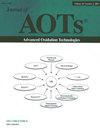阴离子掺杂TiO2降解复杂有机基质的光催化性能
Q Chemistry
引用次数: 6
摘要
二氧化钛光催化作为一种创新而有效的去除水和废水中复杂有机物的处理工艺,已经引起了人们的极大兴趣。使用TiO2作为光催化剂有其局限性,因为它的带隙很宽,导致太阳能光的利用率很小。在这方面,二氧化钛的结构修饰,如金属和非金属掺杂已经被详细揭示,以受益于光催化应用的太阳辐射。在本研究中,研究了c掺杂、n掺杂、s掺杂和S-N共掺杂TiO2光催化剂的光催化性能,用于降解以复杂有机基质为代表的腐植酸的高分子尺寸组分。为此,对100 kDa分子大小的腐植酸溶液进行了太阳能(solar /PC)和紫外线(UV/PC)光催化氧化。根据腐殖质紫外-可见参数(Color436和UV254)和溶解有机碳含量对降解动力学和去除率进行了比较评价。此外,还应用了以荧光强度作为激发和发射波长函数的激发-发射矩阵(EEM)形式的先进荧光技术。通过比较不同阴离子掺杂TiO2样品的光催化去除效率,发现在选择腐殖质参数时,太阳能光催化氧化工艺具有更高的性能。EEM荧光特征显示,随着溶解有机碳含量的去除程度,腐植酸样荧光团的去除和黄腐酸样荧光团的出现,这可能是由于阴离子掺杂的TiO2样品在UV/PC工艺下表现为S-N共掺杂> n掺杂> c掺杂> s掺杂>裸掺杂。本文章由计算机程序翻译,如有差异,请以英文原文为准。
Photocatalytic Performance of Anion Doped TiO2 on the Degradation of Complex Organic Matrix
Abstract TiO2 photocatalysis has gained a great interest as an innovative and effective treatment process for the removal of complex organic matter present in water and wastewater. Employment of TiO2 as a photocatalyst has its limitations due to its wide band gap that causes utilization of very small fraction of solar light. In that respect, structural modifications of TiO2, such as metal and non-metal doping have been revealed in detail to benefit from solar radiation for photocatalytic applications. In this study, photocatalytic performances of C-doped, N-doped, S-doped and S-N co-doped TiO2 photocatalysts were investigated for the degradation of a high molecular size fraction of humic acid as a representative of complex organic matrix. For this purpose, 100 kDa molecular size fraction of humic acid solution was subjected to both solar (Solar/PC) and UV (UV/PC) photocatalytic oxidation processes. Degradation kinetics and removal percentages were comparatively evaluated in terms of humic UV-vis parameters (Color436 and UV254) and dissolved organic carbon contents. Moreover, advanced fluorescence techniques in the form of an excitation-emission matrix (EEM) of fluorescence intensity as a function of excitation and emission wavelengths were also applied. Comparison of the photocatalytic removal efficiencies of different anion doped TiO2 specimens revealed higher performance of solar photocatalytic oxidation process in terms of the selected humic parameters. EEM fluorescence features displayed the removal of humic-like fluorophores and emergence of fulvic-like fluorophores in accordance with removal extent of dissolved organic carbon contents which could be attributed to the performances of anion doped TiO2 specimens as S-N co-doped>N-doped>C-doped>S-doped>bare for UV/PC process.
求助全文
通过发布文献求助,成功后即可免费获取论文全文。
去求助
来源期刊
CiteScore
0.88
自引率
0.00%
发文量
0
审稿时长
1 months
期刊介绍:
The Journal of advanced oxidation technologies (AOTs) has been providing an international forum that accepts papers describing basic research and practical applications of these technologies. The Journal has been publishing articles in the form of critical reviews and research papers focused on the science and engineering of AOTs for water, air and soil treatment. Due to the enormous progress in the applications of various chemical and bio-oxidation and reduction processes, the scope of the Journal is now expanded to include submission in these areas so that high quality submission from industry would also be considered for publication. Specifically, the Journal is soliciting submission in the following areas (alphabetical order): -Advanced Oxidation Nanotechnologies -Bio-Oxidation and Reduction Processes -Catalytic Oxidation -Chemical Oxidation and Reduction Processes -Electrochemical Oxidation -Electrohydraulic Discharge, Cavitation & Sonolysis -Electron Beam & Gamma Irradiation -New Photocatalytic Materials and processes -Non-Thermal Plasma -Ozone-based AOTs -Photochemical Degradation Processes -Sub- and Supercritical Water Oxidation -TiO2 Photocatalytic Redox Processes -UV- and Solar Light-based AOTs -Water-Energy (and Food) Nexus of AOTs

 求助内容:
求助内容: 应助结果提醒方式:
应助结果提醒方式:


